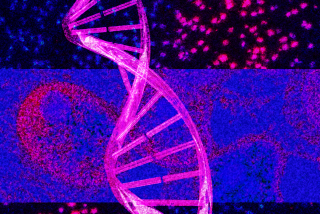Immigration files to be archived
- Share via
Historical government files that chronicle the lives of immigrants in the U.S. will become part of the National Archives instead of being destroyed, officials announced Wednesday.
The files could reveal the untold stories of millions of immigrants, including scores of Jews who fled Europe after World War II and Chinese who came to the U.S. as part of the diaspora. The “alien registration files,” or A-files, document both legal and illegal immigrants’ interaction with the government through registration forms, interview transcripts, health records, photographs, marriage licenses and recordings.
“The files are incredibly rich,” said Cynthia Fox, a deputy director at the National Archives. “These will allow people to trace back to place of birth where their family actually originated. . . . This will be their whole story, not just a piece of their story.”
On Wednesday, U.S. Citizenship and Immigration Services began transferring the documents for preservation by archivists during a signing ceremony at the National Archives in Washington. The immigration agency maintains about 53 million A-files and will transfer them beginning 100 years after an individual’s birth date.
The first group to be archived is composed of 135,000 people who were born before 1909 and arrived after 1900, including Spanish painter Salvador Dali and French performer Maurice Chevalier. The first files are expected to be available to the public starting next summer.
In the past, A-files were considered “temporary records” and could have been discarded 75 years from the date of last action. Now, they will become permanent records to be housed in either San Bruno, Calif., or Kansas City, Mo.
The A-files, which began in 1944, may include registration forms with a person’s name, address, physical description, employer, where and when they arrived, and whether they came as a passenger, crew member or a stowaway. They may also include transcripts from deportation proceedings, tapes from interviews and affidavits from neighbors.
“Individually, A-files represent the story of one immigrant,” said Gregory B. Smith, associate director of the citizenship agency. “But as a collection, they document the story of American immigration from the mid-20th into the 21st century.”
Smith said the files showed how the government interacted with Japanese in internment camps, Chinese who adjusted their immigration status after the Chinese Exclusion Act was repealed and people who petitioned for their relatives under the Immigration Act of 1924.
UC Davis immigration law professor Bill O. Hing said he thought the files of his parents, who immigrated from China, would be among the first to be transferred into the archives. He tracked down the files years ago and read about how his parents entered the U.S., including the transcript of an interview where his father was caught in a lie.
Hing said the files were a great opportunity for historians and people interested in immigration policy.
“It really gives you rich details as to how the laws were implemented and some of the unintended consequences,” he said. “Because you can actually see the faces of the people who are actually affected by the laws, it makes a difference.”
--
More to Read
Sign up for Essential California
The most important California stories and recommendations in your inbox every morning.
You may occasionally receive promotional content from the Los Angeles Times.










